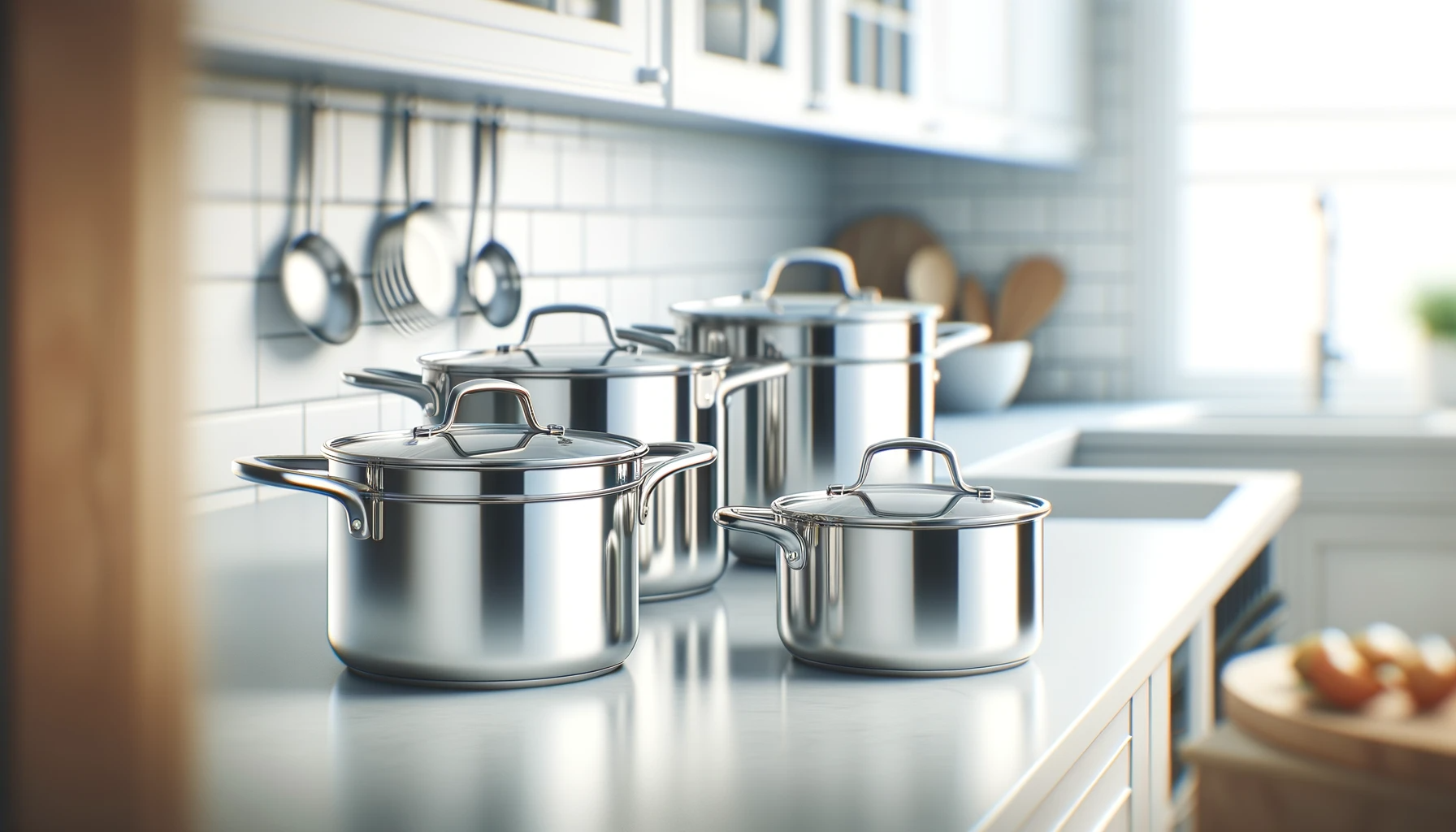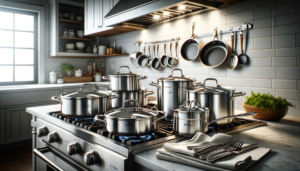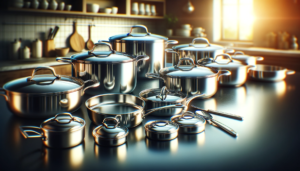If your prized All-Clad or other tri-ply stainless steel cookware has lost its original shine and performance no matter how much you scrub, it may be time for a deep cleaning reboot.
Learning specialized methods tailored for stainless steel cookware allows anyone to restore appearances and functionality with common kitchen staples.
Let’s dive into best practices for keeping tri-ply stainless steel cookware looking pristine and working like new for decades…
Why It’s Important to Clean Stainless Steel Cookware Properly

It is important to properly clean stainless steel cookware for several reasons.
First, proper cleaning prevents foods from sticking and staining the interior surfaces during cooking.
Burnt-on or baked-on food residue can be very difficult to remove if it is allowed to build up over time.
Second, cleaning removes sauces, oil residues, and other cooking remnants that can impart flavors to your next meal if they are not fully eliminated.
No one wants last night’s garlic and tomato sauce to end up in tonight’s lemon chicken.
Third, proper cleaning helps prevent corrosion and rust formation on stainless steel cookware.
While stainless steel does not rust as easily as other materials, it can corrode, pit, and stain without due care.
Finally, regularly and thoroughly cleaning tri-ply stainless steel cookware simply keeps it looking shiny and brand new for much longer.
The time invested pays dividends in preserving good appearances and performance.
Supplies You’ll Need
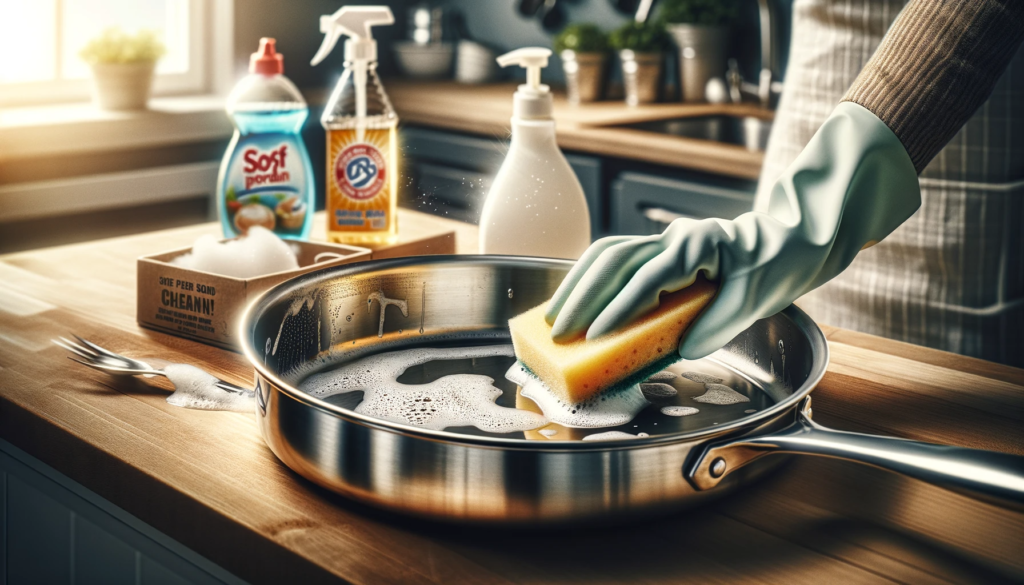
You do not need fancy cleaners or special equipment to properly clean tri-ply stainless steel cookware.
Most of the cleaning can be accomplished with common kitchen staples.
First, you will need dish soap or detergent for greasy residue cleaning.
Any brand works fine.
Second, have on hand soft sponges or soft cloths for the scrubbing.
Do not use anything abrasive that could scratch the finish.
If you want extra cleaning power, baking soda makes an excellent abrasive cleansing powder when made into a paste.
For stubborn stains and discoloration, white vinegar is helpful for its acidic dissolving powers.
If dealing with minor rust spots, then steel wool pads give just enough abrasion without damaging stainless steel.
Finally, hot water is essential for effective cutting through oil and greasy residues.
Cleaning Exterior Surfaces
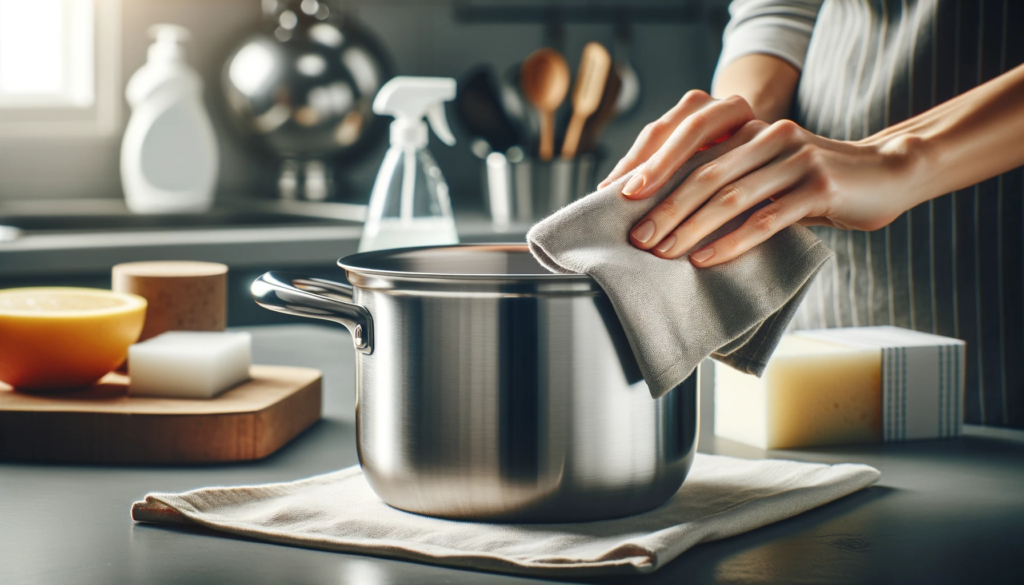
The exteriors of tri-ply stainless steel cookware are the easiest parts to clean.
But they still require regular attention to keep your pots and pans looking pristine.
First, make it a habit to wipe away drips, spills, splatters, and other food debris promptly after cooking while the cookware is still warm.
This prevents crusty baked-on residues.
For routine cleansing, just add a small squirt of dish soap to a soft sponge, lather it under warm running water, and wash all the exterior surfaces.
Pay attention to handles and rivets where grease loves to hide.
Give an extra scrub with a sponge or soft cloth to remove any stuck-on material.
For stubborn stains that do not budge, make a paste of baking soda and water and use it to gently scour the affected area.
Let it sit for a few minutes before scrubbing again and rinsing.
White vinegar can also be used full-strength on a cloth to dissolve some stains chemically.
Just do not allow vinegar contact with cookware for more than a few minutes at a time, and always rinse thoroughly with water afterward.
Whatever method you use, take care to rinse exterior surfaces fully with warm water and hand dry them completely when done.
Allowing moisture or cleaning residues to air dry leads to water spots marring appearances.
Cleaning Interior Surfaces

While a little more care is required, the tri-ply layered interiors of quality stainless steel cookware are designed for longevity with proper maintenance.
Start by filling the cookware about halfway with hot water from the tap and squirting in some dish soap.
For pans that saw heavy use with strong spices, fats, or sauces, letting them soak for anywhere from 10 minutes to a few hours allows the grime to soften for easier removal.
Use a soft cloth or sponge with the hot, sudsy water to then gently scrub all interior surfaces of the cookware.
Most of the time, this is sufficient for normal cleaning.
If you cooked eggs, meat, fish, or cheese that left protein residues, make an abrasive paste with baking soda and water to give the scrubbing a little more power.
Table salt can also be substituted for baking soda.
For the toughest baked-on gunk like burnt sauces or charredstarches, arm yourself instead with a non-scratch plastic mesh scrubber sponge to conquer the mess without damaging the stainless steel finish.
Through each step, take care to thoroughly rinse interior surfaces multiple times until the wash water runs completely clear.
Any soap or cleaning chemical residues left clinging to metal surfaces can damage finishes or taint the next meal cooked.
Preventing Discoloration and Corrosion
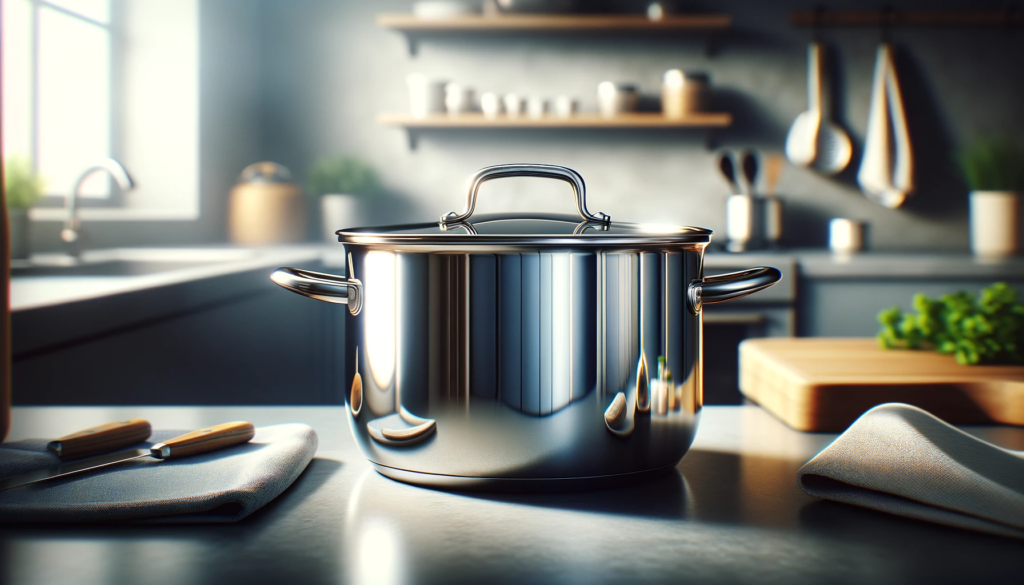
A clean stainless steel pot or pan straight from the shelf is a beautiful sight with its smooth, mirror-like finish.
To keep tri-ply stainless steel cookware looking its best for years to come, care must be taken to prevent damage to exterior and interior surfaces.
Start by dutifully drying cookware both inside and out after every wash.
Moisture allowed to air dry leads to water spots marring appearances and promoting corrosion.
After hand drying thoroughly, we recommend giving interiors a light wipe with a small amount of cooking oil.
This not only protects the metal from prolonged exposure to water droplets that may have been missed, but also gives your next meal a handy head start with some cooking grease already present.
When cookware will be stored for longer than a few days between uses, be sure ware pieces are clean and bone dry before putting them away.
Store cookware somewhere away from humidity and moisture to avoid rust formation.
Finally, using tri-ply stainless steel cookware regularly helps keep it looking pristine.
Leaving pots and pans to sit untouched for extended periods allows oxidation and corrosion processes to take hold.
A quick visual check coupled with a good scrubbing before cooking is all that should ever be needed after proper washing and storage methods between uses.
When to Use Special Cleaners
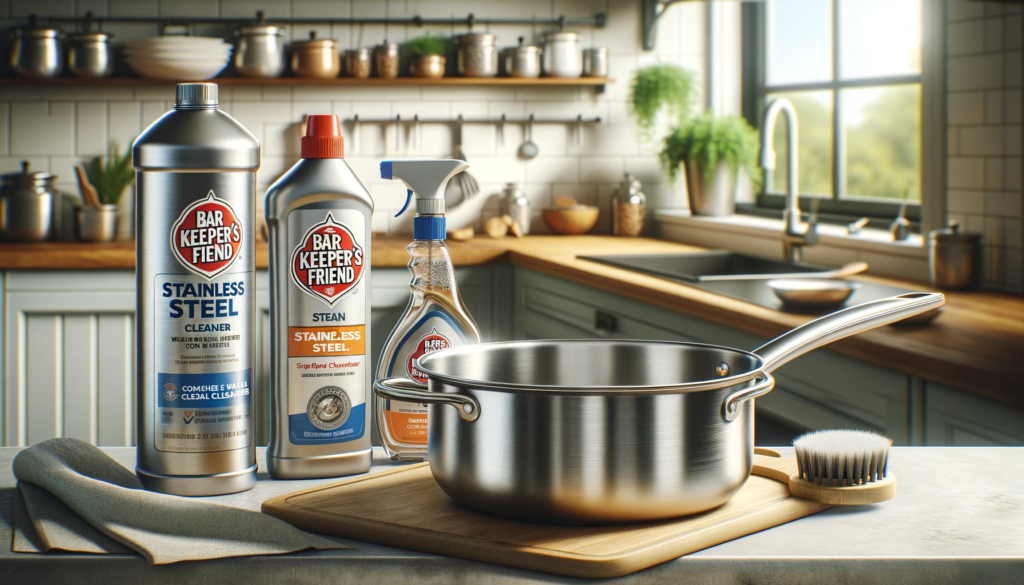
For the most part, tri-ply stainless steel cookware can be kept sparkling clean with the simple methods described above using dish soap, water, soft cloths, baking soda, and vinegar.
However, more stubborn issues may occasionally arise requiring use of specially formulated stainless steel cleaners and polishes.
Hard water mineral deposits can cake on over time if you live in an area with high water hardness.
Spots form when mineral salts from the water precipitate out and bond to stainless surfaces during steam venting or boil overs.
For these crusty areas, try gentle cleansers like Barkeeper’s Friend applied with a soft cloth or sponge.
Let it work on deposits for 5-10 minutes before scrubbing and rinsing.
Be patient repeating applications if needed.
Mineral staining can also appear as rainbow colored patches when oils, moisture, and salts interact.
White vinegar or lemon juice provides acid to dissolve the staining and should restore appearances after washing.
Rust formation, although rare with high quality tri-ply cookware, is still a possibility from prolonged exposure to moisture or certain acidic foods.
Specialty rust removal treatments usually rely on oxalic acid or hydrochloric acid to convert reddish iron oxide to black magnetite for easier cleaning.
Such harsh chemicals require care in handling, so we recommend baking soda scrubbing first before moving to more extreme measures.
Always read product instructions thoroughly and never mix cleaning agents together unless specifically stated as compatible.
Conclusion
Properly caring for tri-ply stainless steel pots and pans does require a small investment of time and effort.
But a little diligent cleaning pays dividends with cookware that maintains its beauty and utility for many years while protecting your health.
Following these best practices for washing, drying, storing, and spot cleaning tri-ply stainless steel cookware helps it resist stains, rust, and other damage mechanisms.
The result is that your cookware will keep providing excellent heat conductivity and responsiveness meal after meal.
